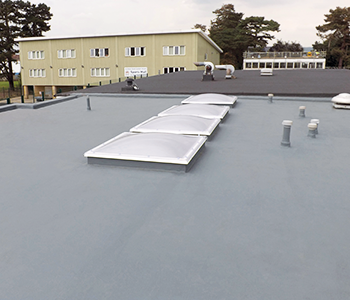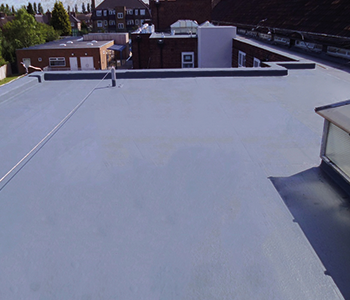With escalating energy costs and recent announcements for energy efficiency upgrades to the tune of £500 Million, schools are taking a closer look at investments to improve energy efficiency. As part of the good estate management for schools, this can be included within the strategic estate management plan.
Whilst lighting, heating and ventilation are important areas singled out in the energy efficiency guidance, improving the building envelope itself can lead to savings. A fabric first approach is a term used to encapsulate a build or retrofit where the components and materials that make up the building fabric are maximised for energy efficiency. In school buildings, high levels of thermal insulation and air tightness can improve their thermal properties. Ensuring a building is highly insulated can significantly reduce heat loss, improve energy efficiency and lead to tangible cost savings.
Whilst most roof build ups incorporate insulation materials, the terminology can be confusing. A warm roof has insulation above the deck, and a cold roof has insulation below the structural deck. Both have insulation within the roof build up. In existing warm flat roofs, the thickness of insulation material can vary from roof to roof depending on age. This is due to building regulations changing over time, leading to ever more increasing thermal improvements. A U value is the measure of thermal transmittance. The better insulated the structure, the lower the U value will be. This U value is becoming increasingly lower and building regulations more stringent to improve the energy efficiency performance of our buildings.
With a large proportion of the school estate consisting of flat roofed buildings, improving the thermal properties of this element of the building fabric can be helpful as part of the school’s strategic plan. In the past, the stripping up and replacement of flat roofs was seen as the only option when the roof came to the end of its life. These days with Triflex technologically advanced liquid waterproofing membrane systems, existing school flat roof build ups can be overlaid with new waterproofing systems. Such an approach can also combine additional insulation. So, not only can thermal upgrades be incorporated, but wastage is reduced, contributing to a more sustainable asset management.
Working with a trusted supplier like Triflex means that a project specification proposal for a new waterproofing system can incorporate a thermal upgrade. In warm roofs the structural deck and support structures are at a similar temperature to the building’s interior. To prevent the hazards of interstitial condensation, the correct insulation and vapour controls layer must be specified with the whole build up well thought out. With U values, condensation risk analysis and wind uplift calculations carefully considered by the Triflex technical team you can be confident in the proposed solutions to deliver the warm roof you require for long term protection.
Of course, it is important to confirm the suitability of the existing flat roof for an overlay solution. There are a plethora of different waterproofing membranes on school flat roofs. Common materials include asphalt, bitumen membranes (felt), single ply membranes and liquid systems. At Triflex on site testing is all part of the approach to providing the right waterproofing solution for the school building. This includes taking multiple core samples to confirm the flat roof build up and its condition, as well as adhesion testing for the new waterproofing liquid membrane. Once the full condition is known the correct repairs, preparation and if required, pretreatment can be defined.
If you are thinking about your flat roof’s thermal performance as part of maximising energy efficiency then get in touch with us here. Our friendly experts are here to help schools get the best solution for their flat roof. And with our own people on the ground (or the roof!) in your area, we offer local support.



